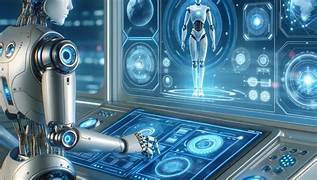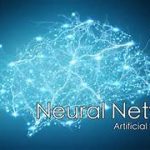The Fate of Humans When Artificial Intelligence Takes Over Jobs
Introduction
Artificial intelligence (AI) is revolutionizing industries at an unprecedented pace, automating tasks that were once exclusive to humans. As AI systems become more sophisticated, concerns are growing about their impact on employment and the future of the workforce. Will humans become obsolete, or will AI create new opportunities? This article explores the potential consequences of AI replacing jobs and how society can adapt to this transformation.
1. The Rise of AI in the Workplace
AI is increasingly being integrated into various industries, leading to automation in both blue-collar and white-collar jobs. Key areas where AI is taking over include:
- Manufacturing: Robotics and automation systems replace assembly line workers.
- Customer Service: AI-powered chatbots handle inquiries and support.
- Healthcare: AI assists in diagnostics and robotic surgeries.
- Finance: Automated trading and fraud detection minimize human intervention.
- Transportation: Self-driving vehicles reduce the need for drivers.
2. Job Loss vs. Job Transformation
While AI will undoubtedly eliminate some jobs, it will also create new ones. The key question is whether the new opportunities will outweigh the losses.
Jobs at High Risk of Automation:
- Data entry clerks
- Telemarketers
- Cashiers
- Factory workers
- Delivery drivers
Emerging Job Opportunities:
- AI ethics specialists
- Data scientists
- Robotics engineers
- AI maintenance and support technicians
- Digital transformation consultants
3. The Economic Impact of AI-Driven Job Displacement
AI-driven job loss could lead to economic instability if not managed properly. Concerns include:
- Wage Inequality: High-paying tech jobs may be limited to those with specialized skills.
- Unemployment Rates: Mass displacement could lead to social unrest.
- Redefinition of Work: The traditional 9-to-5 job structure may become obsolete.
Governments and businesses must work together to create policies that ensure economic stability, such as universal basic income (UBI) or AI taxation.
4. The Role of Education and Reskilling
To prepare for an AI-driven future, reskilling and continuous education will be crucial.
Key Solutions:
- Investing in STEM education (Science, Technology, Engineering, Mathematics)
- Encouraging soft skills development (critical thinking, creativity, emotional intelligence)
- Providing online learning platforms for career transitions
- Corporate retraining programs for displaced workers
5. The Psychological and Social Consequences of AI Replacing Jobs
Job loss is not only an economic issue but also a psychological and social one. Work gives people a sense of purpose and identity.
Potential Social Challenges:
- Increased mental health issues due to job insecurity
- Social polarization between skilled and unskilled workers
- Shifts in societal values regarding work and productivity
6. How Society Can Adapt to an AI-Driven Workforce
- Embracing the Human-AI Collaboration Model: Instead of replacing humans, AI can assist in tasks, improving efficiency and productivity.
- Exploring Alternative Work Models: Reduced working hours, gig economy opportunities, and remote work can offer flexibility.
- Policy Reforms: Governments must introduce social safety nets, such as universal healthcare and AI taxation, to mitigate economic disparities.
Conclusion
The future of work in an AI-dominated world is uncertain, but it does not necessarily spell doom for humanity. While AI will take over many jobs, it will also create new industries and redefine the workforce. By investing in education, reskilling, and adapting to new economic models, humans can continue to thrive alongside AI. The key lies in embracing change rather than fearing it.


